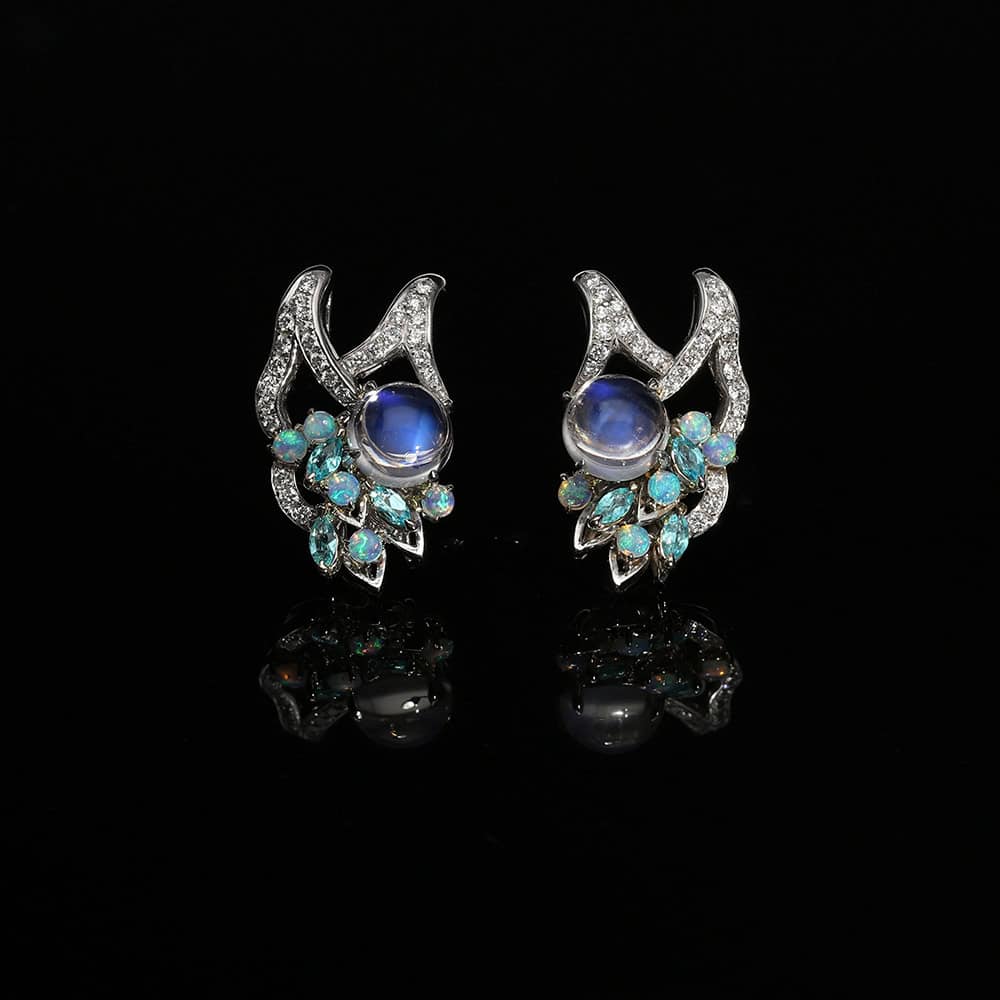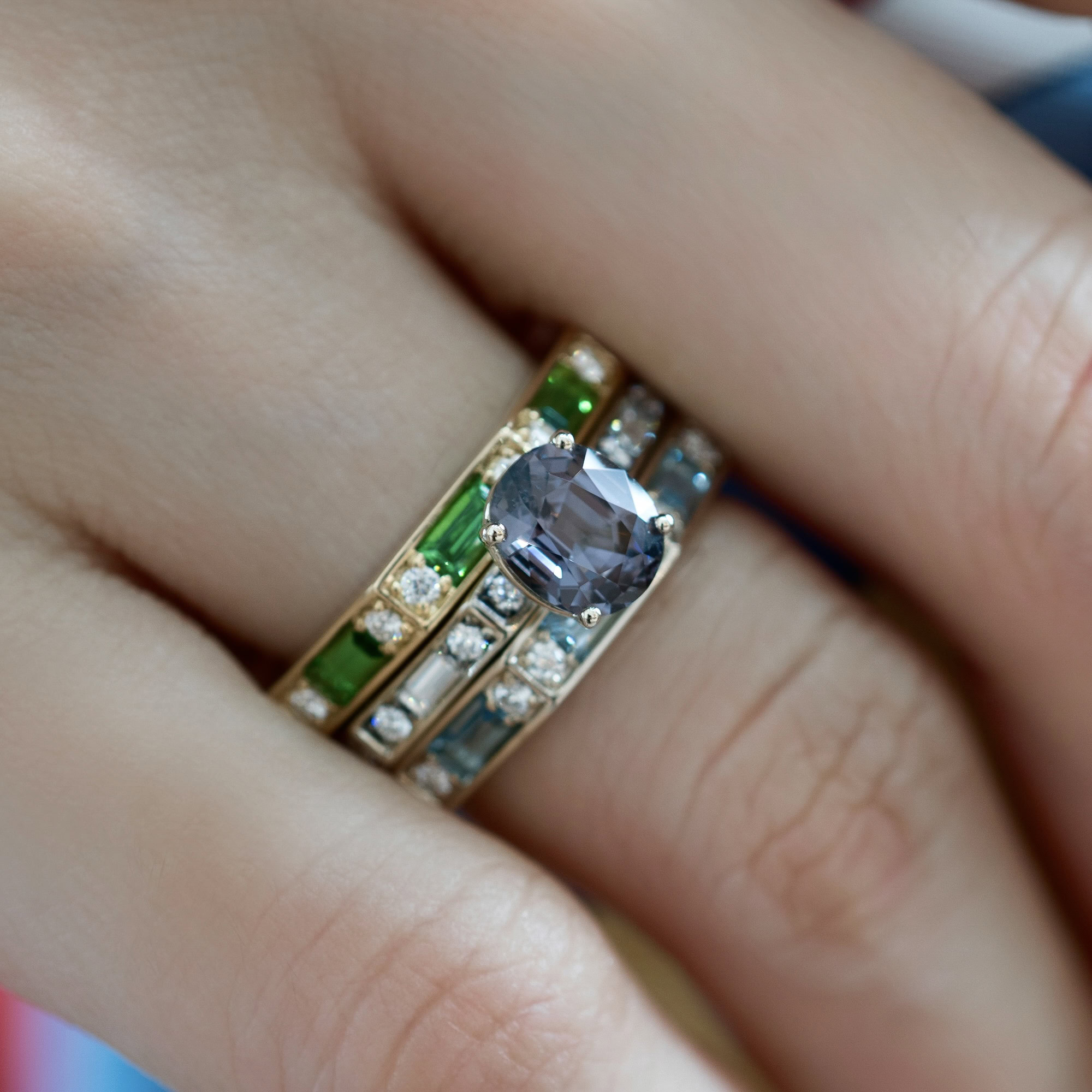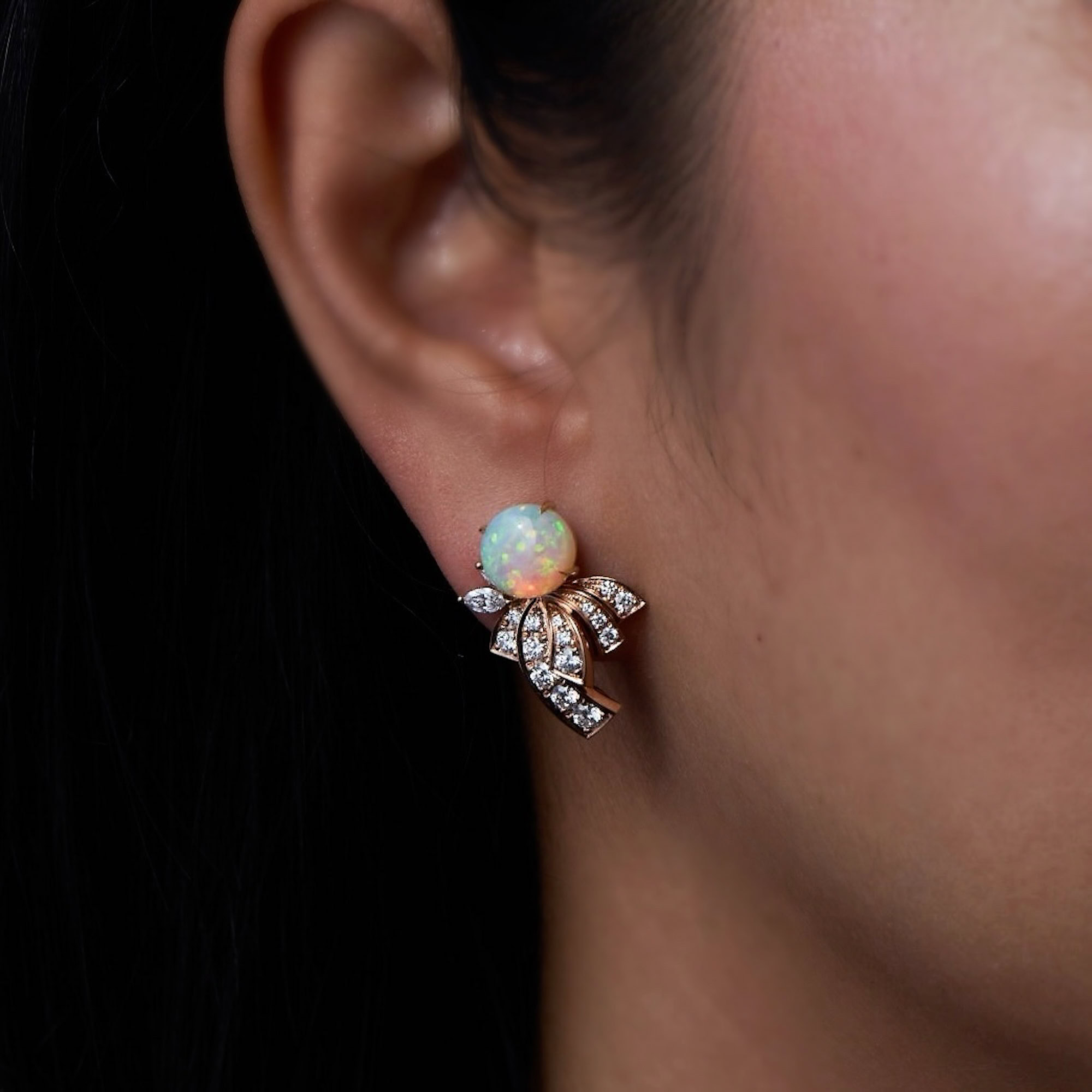Gemstones that interact with light to create special optical effects or “phenomena” are known as phenomenal gems. Calla Lily’s founder, Emily Tan, loves these rare and unique gems, as they are truly a wonder of nature.
Part 1 – (colour-change) – an Alexandrite gemstone filmed in our studio, under white light and then yellow light, displaying the colour-change phenomenon.
Part 2 – (cat’s eye) – a pair of cabochon cat’s-eye Chrysoberyls, and a cat’s-eye Morganite ring in 18k white gold with a lavender Spinel, purplish-grey Tanzanites, Paraibas, and fancy-cut Diamonds.
Part 3 – (Asterism) – 18k black Sapphire ring, with a violet Tanzanite, mint Tourmaline, Paraibas, and arrow-cut Diamonds.
Part 4 – (Adularescence) – Moonstone earrings in 18k white gold with marquise Paraibas, and Opal and Diamond rounds.
“I’ve always been intrigued by phenomenal gemstones because they’re simply awesome creations, and each gem is like a discovery waiting to be explored. From colour-change Alexandrites, cat’s-eye Morganites, to star Sapphires, I search out these gems because they are fascinating and extremely rare”, says Emily Tan.
The colour-change effect is best in Alexandrites, but can also be apparent in some Sapphires, Spinels, and Garnets. In Alexandrites, it’s traces of chromium that allows through almost equal wavelengths of green and red light, creating a delicate balance of reflected light. Under day light rich in greens and blues, they look greenish blue, but under incandescent light rich in red wavelengths, the gems appear purplish to red.
Parallel needle-like inclusions – that form as part of the natural crystal growth in some gems like Chrysoberyls and Morganites – reflect light to create a silky sheen. The gemstone needs to be shaped and polished “en cabochon” like a dome, from the French word “caboche” for “head”. If the stone is cut correctly, with the cabochon’s base parallel to the inclusions, the sheen concentrates across the dome, creating a “cat’s-eye effect”.
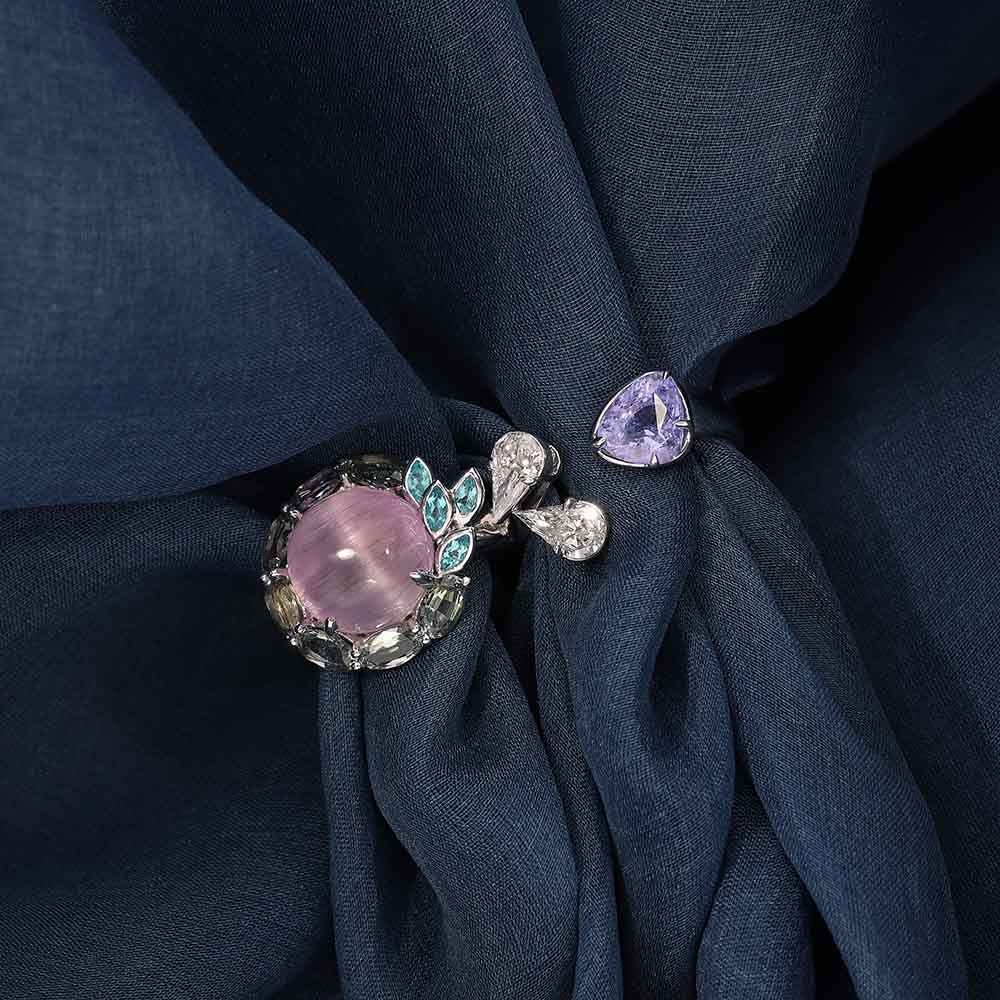
In some gems like Sapphires, the crossing of these sheen-like bands across the dome, create a star-effect called asterism, which in astronomy means ‘a pattern of stars’. Fine star Sapphires are very rare, especially with a brilliant and well-centred star.
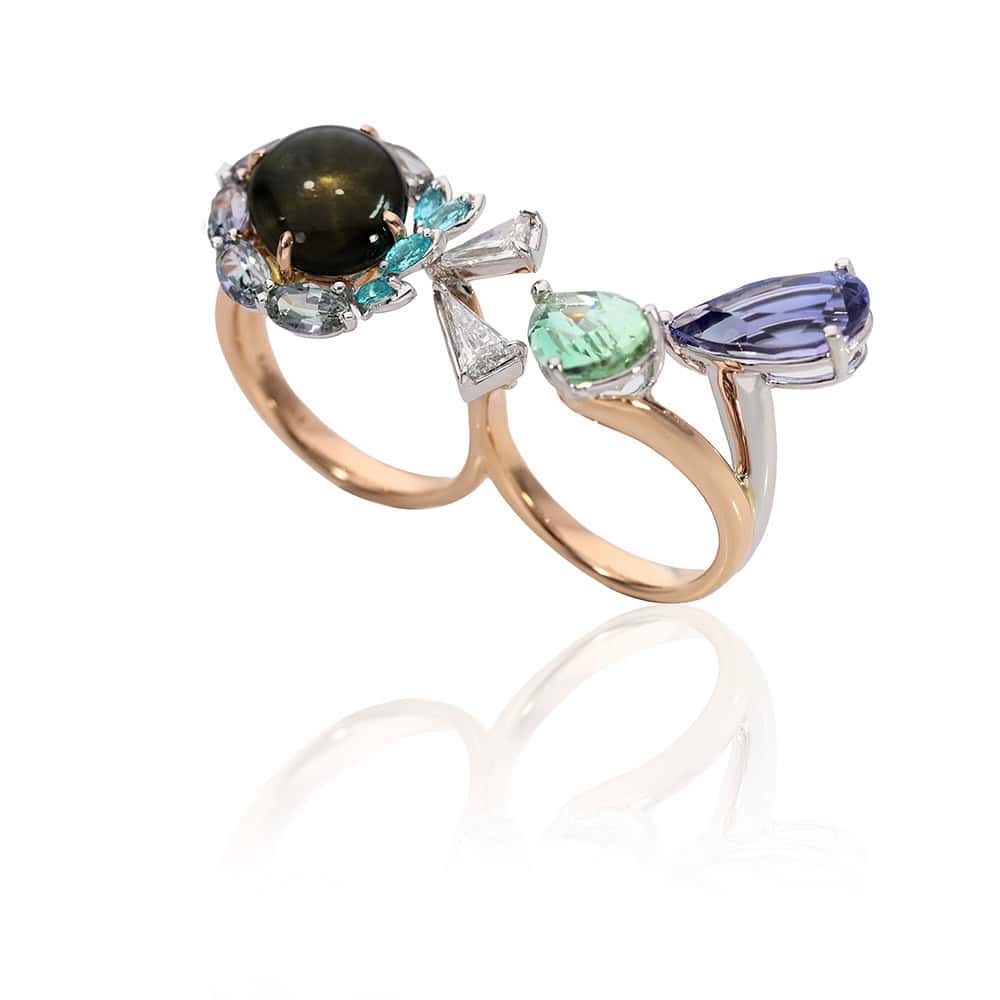
In some Moonstones, light passing through layers with slightly different optical properties causes a scattering and interference effect called schiller – a milky, bluish luster or glow coming from the top of the gemstone. The optical phenomenon is known as adularescence.
